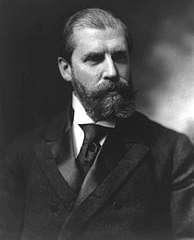1916 United States presidential election in North Dakota
The 1916 United States presidential election in North Dakota took place on November 7, 1916. All contemporary forty-eight states were part of the 1916 United States presidential election. Voters chose five electors to the Electoral College, who voted for president and vice president.
| ||||||||||||||||||||||||||
| ||||||||||||||||||||||||||
| ||||||||||||||||||||||||||
| Elections in North Dakota | ||||||
|---|---|---|---|---|---|---|
 | ||||||
|
||||||
|
||||||
North Dakota was won narrowly by incumbent President Woodrow Wilson (D–New Jersey), running with incumbent Vice President Thomas R. Marshall, with 47.84% of the popular vote, against Associate Justice of the U.S. Supreme Court Charles Evans Hughes (R–New York), running with former Vice President Charles W. Fairbanks, with 46.34% of the popular vote. Apart from the state’s first presidential election in 1892, this is the closest presidential result on record in North Dakota,[1] although the state was only the sixth-closest of the 1916 election.
Wilson had previously won North Dakota four years earlier.
Results
| Presidential Candidate | Running Mate | Party | Electoral Vote (EV) | Popular Vote (PV) | |
|---|---|---|---|---|---|
| Woodrow Wilson | Thomas R. Marshall | Democratic | 5[2] | 55,206 | 47.84% |
| Charles Evans Hughes | Charles W. Fairbanks | Republican | 0 | 53,471 | 46.34% |
| Allan L. Benson | George R. Kirkpatrick | Socialist | 0 | 5,716 | 4.95% |
| Frank Hanly | Ira Landrith | Prohibition | 0 | 997 | 0.86% |
References
- "Presidential General Election Results Comparison – North Dakota". Dave Leip’s U.S. Election Atlas.
- "1916 Presidential General Election Results – North Dakota". Dave Leip’s U.S. Election Atlas. Retrieved 26 December 2019.


